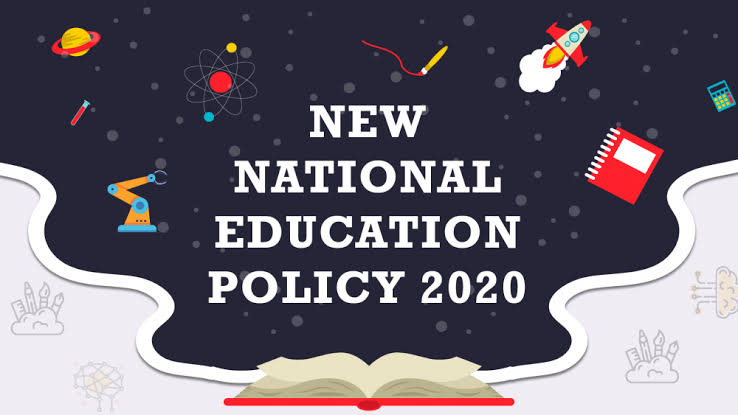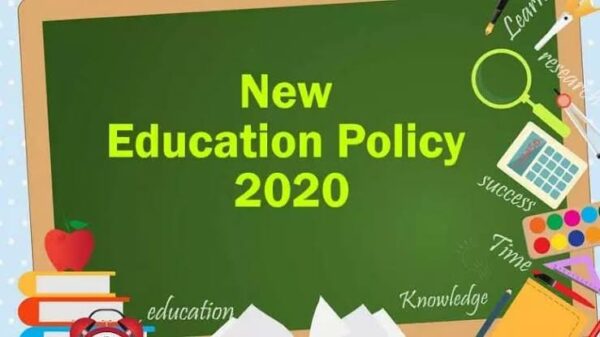
National Education Policy NEP 2020 is aiming for a revolution in the education field in India. It is a welcome move from the ruling party because the education policy has been untouched for 34 years. It’s time that it is updated with the changing environment. NEP will implement several reforms in the education sector at all levels to change the essential understanding of education in the country.
It will also try to change the vision of facilitators of education like college, schools and teachers. In short, it will be a 360° revolution in approach towards education. The new education policy is based on pillars of quality, equity, access, affordability, accountability. It aims to transform India from an exporter of high skilled workers to an indigenous knowledge hub.
What is the National Education Policy? How will it change education in India?
The National Education Policy NEP will introduce reforms in the school education structure and curriculum to reduce syllabus across streams of learning. The reforms will foster flexibility of subjects to achieve a hundred per cent gross enrolment ratio in preschool to secondary level by 2030.
The new policy will change the existing school structure of 10+2 of school education to a 5+3+3+4 structure. This new structure will cover children between 3 to 18 years of age.
The new structure will encompass three years of Anganwadi or preschool followed by two years in primary school in 1st and 2nd standard, which will cover children from 3 to 8 years of age. Later the preparatory stage will cover children from 8 to 11 years or 3rd to 5th standard. The preparatory phase will be followed by a middle stage which will cover children from 11 to 14 years and includes the 6th to 8th standard. The secondary stage will cover children from 14 to 18 years of age in two phases.
9th and 10th standard in the first and 11th and 12th standard in the second phase. The NEP also aims to reduce the curriculum to core subjects. It will help students to focus on practising critical thinking and invest time in analysis based learning. It’s a fact that Indian education is only theory, and when students are told to perform tasks in actual life, they fail because hands-on experience with key concepts is missing in our school system. Rote learning, spoon-feeding concepts and lack of practical exposure haunt the Indian school system.
The NEP wants to do away with separate terms like curricular, extracurricular, co-curricular and separation of streams like arts, sciences, maths. It will also dim the lines between vocational and academic streams. For increased practical exposure, students will be required to indulge in vocational crafts and internships to gain hands-on experience. The dimming of lines between so-called educational streams will reduce the discrimination between students who choose maths and those who choose humanities.
Because of inadequate information on career streams, students who choose humanities are considered as the runt of the litter (I can vouch for that because I faced similar discrimination when I chose humanities as my subject in higher education. I was told I should consider getting married if I am going to select humanities). Getting hands-on experiences allows a student to explore their interest and qualities, which gives them insight into subjects that they would want to study.
In higher education, students will be allowed to choose subjects that they wish to learn and do away with the rest. Apart from this, the will also help policy focus on introducing courses in native languages to promote multilingualism. To elevate native language learning, different reforms to the assessment system will be made. When a concept is understood in a foreign language, it gets deposited into the brain.
But when a concept is comprehended in the native language or the first language of the student, the concept goes straight to his heart. Students face multiple difficulties in understanding concepts not because they lack brains but because of the barriers foreign language pose. Indian students, when communicating in English, have a continuous translation going on in their heads. Which practice this ongoing translation becomes part of the subconscious and is no longer noticeable.
But at earlier stages, this continuous translation poses problems while studying. The new education policy NEP will also reform the teacher training system. It will introduce scholarship to learn bachelors of the education program and develop modules to improve the skills of teachers. In higher education, the NEP will reduce the fragmentation and include all higher education institutions HEIs into large multidisciplinary universities, colleges and knowledge hubs. The undergraduate degrees will be of four years with multiple exit options during the period.
All the dropouts are provided with an appropriate certificate so that they can resume learning. Postgraduate programmes will be tailor-made to suit the names of the student based on undergraduate degrees. The NEP will introduce the Academic Bank of Credit ABC to store digital credits so that no learning is lost.
Given the ambitious new education policy NEP, what are the lacunae in implementation?
The new education policy NEP was introduced on 29 July 2020. It has been a year since the policy was introduced, but we do not see any special developments. The primary reason for faltering is health emergencies because of the COVID-19 pandemic. In his article ‘why public policies fail: policy-making and complexity’, Bernardo Muller has listed five reasons that impact public policies and their failed implementation.
Muller talked about cognitive biases, subjective reaction, poor prediction, non-linear nature of public policies and dependent evolution of policies. Pre-existing bias, opinions, prejudices, uncertainty like Covid, resistance to change, complex systems for evolution, et cetera hinder a policy achieve its full potential. The same concerns are to be addressed while implementing the NEP to ensure optimum benefits.
A foolproof policy should be developed so that it can reduce the risk of failure and increased the possibility of subject success. The policymakers spent a year making the policy which is a welcome move. To implement NEP, a brand-new organisational structure is required called the national education policy commission, which will work only on implementation. To ensure smooth implementation, the public officials implementing the policy should be held accountable to avoid corruption and incompetent work.
There should be checks and balances established via institutions. The responsibility and authority of officials implementing the NEP are equated with the authority and function of institutions entrusted with the task. In simpler language, institutions and officials should not supersede each other and work in synchronisation. Steering committees like the UGC and regulatory bodies at the Centre and state levels should be created to monitor and direct implementation.
Any organisation is incomplete without funds. To ensure smooth working, timely disbursement of funds must be practised. Apart from timely distribution of funds, allocation of financial resources should be done. Indian bureaucracy is a labyrinth when the paperwork gets into action. This problem is faced by every government sector, which needs a solution. One solution can be a special purpose vehicle SPV to provide funds for NEP on time.
India is inclined towards public-private partnership in every sector, including education. New and additional tax incentives should be provided to higher education institutions. Institutions of Eminence and other institutions that perform well must be empowered and given autonomy to function independently. The government of India has been promoting institutions of eminence so that they inch towards becoming world-class institutions.
Where does Covid fit in the new education policy NEP?
When NEP was introduced, no one imagined that the COVID-19 pandemic would stay for long. The NEP needs to rethink its core principles because offline education is far away. The health experts predict a third wave hence hands-on training, off-line classes, interaction amongst students and teachers, internships, vocational training etc, stands on thin ice.




